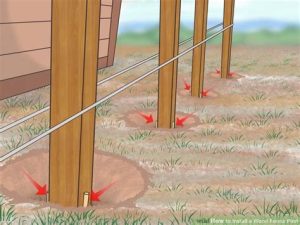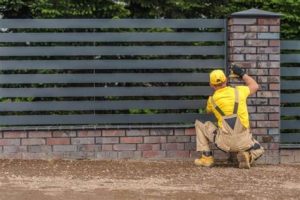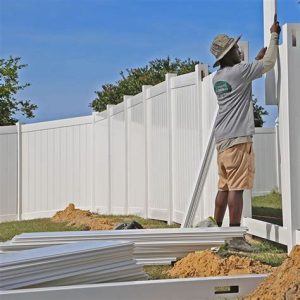Learn how to navigate legal requirements, local regulations, education necessities, and licensing exams for successful professional licensing.Installing a fence is more than just a DIY weekend project; it often requires a license to ensure compliance with local laws and safety standards. With various regulations in place, navigating the process can be daunting for aspiring fence installers. This step-by-step guide aims to demystify the journey of obtaining a license to install fences. From understanding the legal requirements and researching local regulations to meeting education and experience prerequisites, each stage is crucial for a successful application. Additionally, we’ll discuss how to prepare for the licensing exam, equipping you with the knowledge and confidence needed to tackle this exciting venture. Whether you’re a seasoned contractor or a homeowner looking to start a new career, this guide will help you lay a solid foundation for your fence installation business.
Understanding the Legal Requirements
When it comes to installing fences, understanding the legal requirements is crucial. Each region may have its own set of laws, permitting procedures, and zoning regulations that you must comply with before initiating any project. Being informed about these regulations not only ensures that you operate within the law but also helps you avoid potential disputes with neighbors and local authorities.
Typically, the first step is to check with your local government or zoning office.
- Permits: Determine if you need a permit to construct a fence, as many municipalities require one, especially for taller fences.
- Property Lines: Knowing your property boundaries is essential to avoid encroachment issues. You may need to have your property surveyed.
- Height Restrictions: Local laws may limit the height of fences in residential areas.
- Aesthetics and Materials: Some places have specific guidelines on materials used and the overall appearance of fences.
Failing to adhere to these legal requirements can lead to fines, or worse, having your fence removed. Therefore, doing your homework and obtaining the right information before moving forward with installation is paramount.
Researching Local Regulations and Codes
Before embarking on your journey to obtain a license for installing fences, it’s crucial to familiarize yourself with local regulations and building codes that govern fencing projects. Each municipality or state may have different requirements, and understanding these is vital to ensure compliance.
The first step is to check with your local government offices. Most municipalities have specific zoning laws that dictate where a fence can be placed, its height, and materials permitted. This information is often available on the city or county’s official website. For example, some places have restrictions on the use of certain materials for aesthetic or safety reasons.
Additionally, you should consult with your homeowners’ association (if applicable), as they might have their own set of rules regarding fence installation that could impact your design choices. Remember, not adhering to these regulations could result in fines or the necessity to remove your fence after installation.
| Resource | Details |
|---|---|
| Local Government Office | Check zoning laws and building codes. |
| Homeowners’ Association | Review specific rules and restrictions. |
| Building Permits | Determine if a permit is required for installation. |
| State Licensing Board | Verify sta |
Meeting Education and Experience Requirements
When it comes to obtaining a license to install fences, understanding and fulfilling the education and experience requirements is crucial. Each state or region may have different stipulations, so it’s important to research the specific requirements in your area. Generally, a combination of formal education and hands-on experience is required to ensure that you are well-prepared for this line of work.
Many licensing boards require you to demonstrate a level of competence through either vocational training or relevant coursework.
- High School Diploma or equivalent
- Associate Degree or Certificate in Construction Technology
- Apprenticeship programs specifically focused on fencing installation
In addition to formal education, practical experience is equally important. Many states require a certain number of hours worked in the field under the supervision of a licensed professional.
- Seek out apprenticeship opportunities to learn directly from experienced installers.
- Keep a detailed log of your work hours and the types of projects you have completed.
- Consider volunteering for community projects that involve fence installation to gain additional experience.
By ensuring that you meet both the educational and experiential requirements, you’ll be better positioned to pass the licensing exam and to succeed in your career as a licensed fence installer.
Applying for the License
Applying for a fence installation license is a crucial step in starting your own fencing business or becoming a professional installer. This process can vary significantly depending on your location, but there are general steps you can follow to simplify the application process.
First, gather all necessary documentation which may include proof of completed education, work experience, and any relevant certifications. You may also need to provide a background check or proof of insurance, depending on your local regulations. It is vital to check with your state or local licensing board for specific requirements that might apply.
Next, you’ll need to fill out the license application form. This form can often be found on the official website of your local licensing authority. Ensure that all sections are filled out completely and accurately. Some jurisdictions may also require you to submit an application fee, so be prepared to provide payment if necessary.
Remember, being thorough and precise during the application process can save you time and frustration later on.
Once your application is submitted, it may undergo a review process by the licensing authorities. You might have to wait a few weeks to get a notification about your application status. Be patient and use this time to prepare for any upcoming interviews or additional requirements that may be needed.
In summary, applying for a fencing license involves gathering documentation, completing a detailed application form, and submitting it to the relevant authorities. Being organized and informed will smooth the path toward achieving your fencing installation license.
Preparing for the Licensing Exam
Preparing for the licensing exam is a crucial step in your journey to becoming a licensed fence installer. This exam typically assesses your knowledge of fencing regulations, installation techniques, and safety protocols. To ensure a successful outcome, follow a structured approach to your preparation.
First, gather comprehensive study materials. This could include state-specific regulations, installation manuals, and any available practice exams. Familiarize yourself with the content that will be on the test, as this will help you tailor your study plan. Many candidates find it beneficial to join a study group or partner with a colleague to enhance understanding through discussion and shared resources.
Additionally, consider enrolling in a preparatory course specifically designed for the fence installation licensing exam. These courses often provide valuable insights into the testing format and frequently cover the topics that are likely to appear on the exam. Remember to also schedule your study time wisely—consistent daily practice is often more effective than cramming right before the test.
| Tip | Description |
|---|---|
| Understand the Exam Format | Familiarize yourself with how many questions will be asked and the types of questions (multiple-choice, true or false, etc.). |
| Create a Study Schedule | Organize a timeline leading up to the exam to cover all material effectively. |
| Practice with Sample Questions | Use practice exams to test your knowledge and improve your exam-taking skills. |
Frequently Asked Questions
What is the first step in obtaining a license to install fences?
The first step is to check your local regulations and determine if a license is required for fence installation in your area.
Are there specific qualifications needed to get a fencing license?
Yes, most jurisdictions require applicants to demonstrate a certain level of experience or training in fence installation.
What documents are typically required to apply for a fencing license?
Common documents include proof of insurance, identification, application forms, and sometimes records of previous work or references.
Is there a fee associated with obtaining a fencing license?
Yes, many states or local governments charge an application fee, which can vary widely depending on your location.
How long does it usually take to receive a fencing license after applying?
The time frame can vary, but it typically takes anywhere from a few weeks to a few months for the application to be processed.
What should I do if my fencing license application is denied?
If your application is denied, you should check the reasons for denial and address those issues, then you may be able to reapply.
Can I operate without a license if my state doesn’t require one?
While you may not need a license, it is still essential to comply with local regulations, including obtaining necessary permits and following safety standards.





